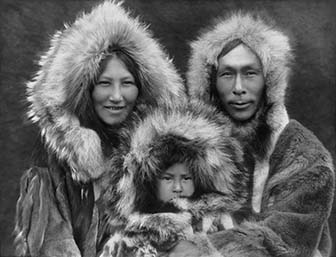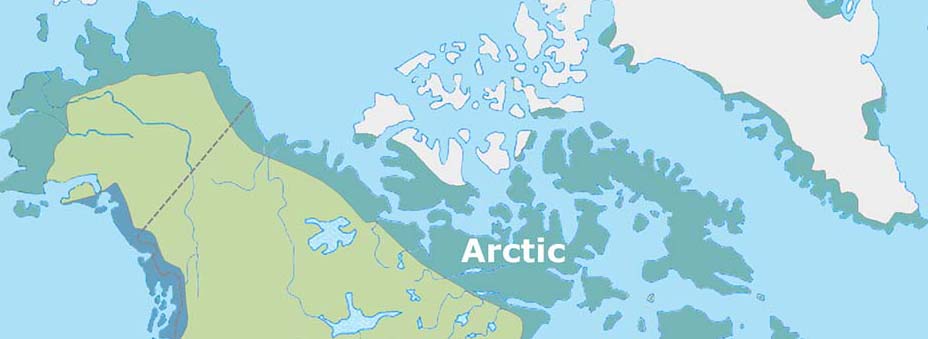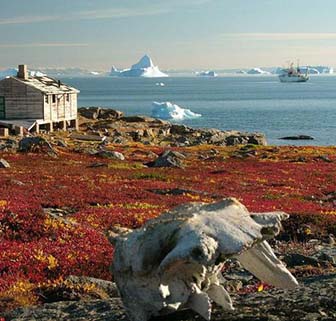Arctic Region
The Arctic is a polar region located at the northernmost part of Earth, consisting of the Arctic Ocean, adjacent seas, and parts of Alaska, Northern part of Canada, Finland, Greenland, Iceland, Norway, Russia and Sweden.

The Arctic region is a unique area among Earth's ecosystems. For example, the cultures in the region and the Arctic indigenous peoples have adapted to its cold and extreme conditions. In recent years, Arctic sea ice decline has been caused by global warming. Life in the Arctic includes organisms living in the ice, zooplankton and phytoplankton, fish and marine mammals, birds, land animals, plants and human societies, Arctic land is bordered by the subarctic.
The earliest inhabitants of North America's central and eastern Arctic are referred to as the Arctic small tool tradition and existed 2500 BC. Arctic small tool tradition or AST consisted of several Paleo-Eskimo cultures, including the Independence cultures and Pre-Dorset culture. The Dorset culture (Inuktitut: Tuniit or Tunit) refers to the next inhabitants of central and eastern Arctic. The Dorset culture evolved because of technological and economic changes during the period of 1050–550 BC. With the exception of the Quebec/Labrador peninsula, the Dorset culture vanished around 1500 AD. Supported by genetic testing, evidence shows that descendants of the Dorset culture, known as the Sadlermiut, survived in Aivilik, Southampton and Coats Islands, until the beginning of the 20th century.

Tribes in the Arctic Region
Return to the: North American Tribal Regions Map
Global Warming and the Arctic Region
The effects of global warming in the Arctic include rising temperatures, loss of sea ice, and melting of the Greenland ice sheet. Potential methane release from the region, especially through the thawing of permafrost and methane clathrates, is also a concern. Because of the amplified response of the Arctic to global warming, it is often seen as a leading indicator of global warming. The melting of Greenland's ice sheet is linked to polar amplification.
The Arctic is especially vulnerable to the effects of any climate change, as has become apparent with the reduction of sea ice in recent years. Climate models predict much greater warming in the Arctic than the global average, resulting in significant international attention to the region. In particular, there are concerns that Arctic shrinkage, a consequence of melting glaciers and other ice in Greenland, could soon contribute to a substantial rise in sea levels worldwide.

The current Arctic warming is leading to fears of ancient carbon being released from thawing permafrost, leading to methane and carbon dioxide production by micro-organisms. Release of methane and carbon dioxide stored in permafrost could cause abrupt and severe global warming, as they are potent greenhouse gases.
Climate change is also predicted to have a large impact on Tundra vegetation, causing an increase of shrubs, and having a negative impact on bryophytes and lichens.
Apart from concerns regarding the detrimental effects of warming in the Arctic, some potential opportunities have gained attention. The melting of the ice is making the Northwest Passage, the shipping routes through the northernmost latitudes, more navigable, raising the possibility that the Arctic region will become a prime trade route. One harbinger of the opening navigability of the Arctic took place in the summer of 2016 when the Crystal Serenity successfully navigated the Northwest Passage, a first for a large cruise ship. In addition, it is believed that the Arctic seabed may contain substantial oil fields which may become accessible if the ice covering them melts. These factors have led to recent international debates as to which nations can claim sovereignty or ownership over the waters of the Arctic.
